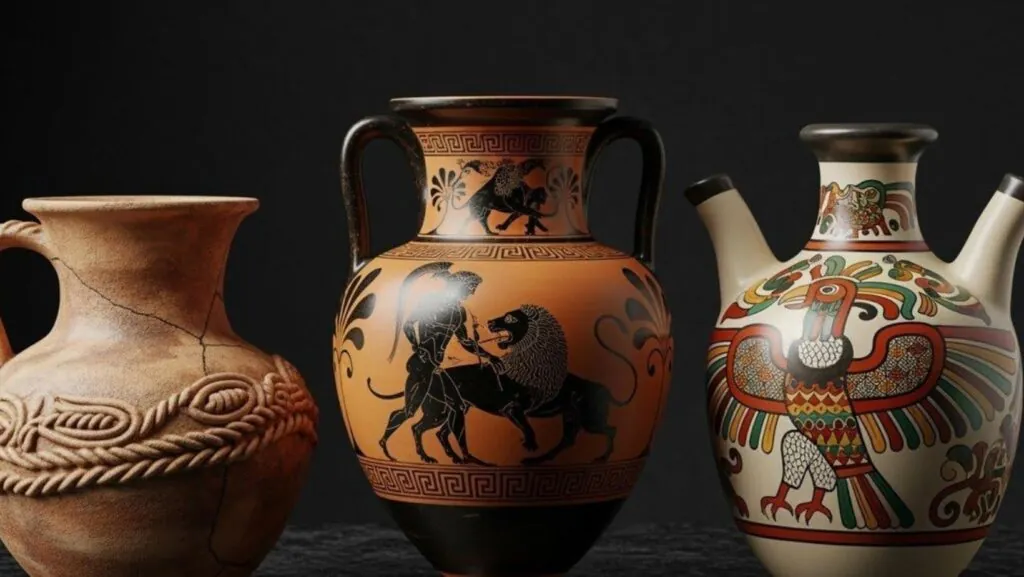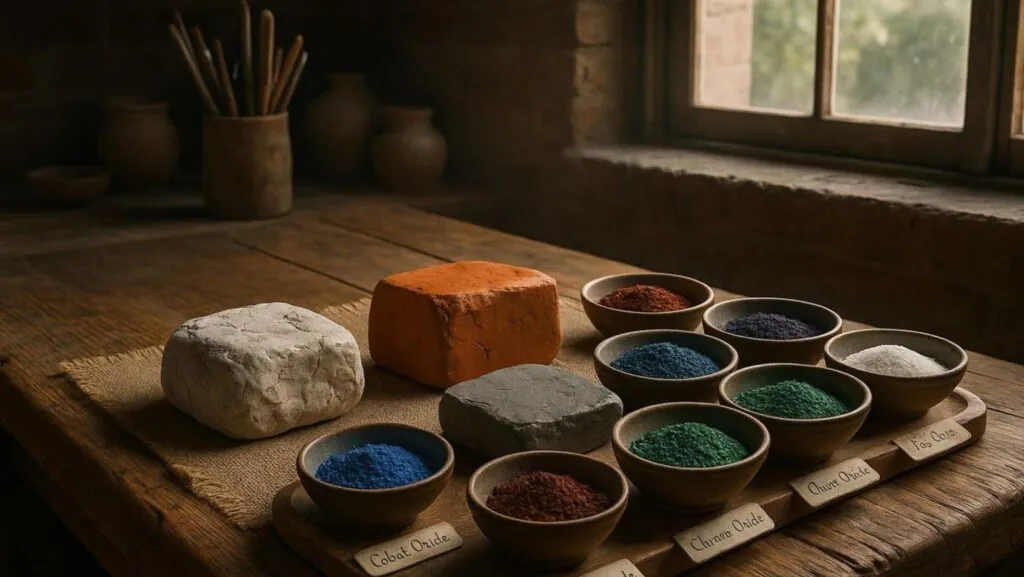Pottery is one of the oldest and most widespread art forms created by people. For thousands of years, pottery has helped shape civilizations, offering everything from everyday items to stunning works of art. Traditional pottery styles from different regions show us the creativity, daily life, and traditions of various cultures.
Every piece tells its own story, using local clays, special techniques, and meaningful decorations. Exploring these traditions shows how much more pottery is than just a way to hold things-it represents a lasting artistic and historical record. If you’re interested in traditional pottery and how these ancient skills continue today, check out zakladyboleslawiec.com.
Pottery dates back to the Stone Age. What makes these time-honored styles stand out is not just their age, but their strong link to where and how they were made.
This overview looks at what gives each tradition its special character, right from the materials used to the ways they are decorated and finished.
What Makes Traditional Pottery Styles Unique?
Traditional pottery is more than just a practical object-it carries the beliefs, stories, and needs of the people who made it. These styles are shaped by local materials and tools, skills passed down in families, and the way people used the finished pieces.
Materials and Methods Used in Traditional Pottery
All pottery starts with clay, yet not all clay is the same. Different types of clay found in different places lead to a variety of pottery styles and qualities. For example, the fine white clay in China lets potters make thin, see-through porcelain, while rougher clay in other places creates stronger, heavier pots. Potters also use local minerals for coloring and to make glazes that cover the surface.
Making pottery involves many skills learned over generations. Some of the oldest ways to shape clay are by coiling, pinching, or building with slabs. When the potter’s wheel came along, it allowed for faster and more evenly shaped pots. Even today, some places still use hand-building, especially for special traditions.
The way pieces are fired-either in open fires or special ovens called kilns-also affects their look and strength. These choices are based on what the local area offers and what past generations have learned works best.
How Pottery Shows Cultural Identity
Pottery is a strong symbol of culture. The shapes, colors, and designs often share stories, show beliefs, or represent important local symbols. For example, the Zulu people use bright colors and patterns that tell about their community, while Minoan pottery from Crete often shows sea life because of the people’s close connection to the ocean.
Pottery making is also often a community activity, passed on, especially by women, to keep family and social traditions alive. Each type-whether for ceremonies, storage, or cooking-shows how people lived and what mattered to them.
What Were the Original Uses of Pottery?
Pottery in the past was mainly for holding and storing things like food, water, and grains. Early pots, such as those from the Jomon people in Japan, were mostly for daily use. Still, pottery soon took on more roles, including for use in ceremonies or as offerings in burials. For example, in Egypt, special pots were left in graves, and among the Maya, ceramics caught ritual blood to give to their gods.
Over time, people began making pottery not only for use but also as an art form. Greek potters, for instance, turned vases into works of art, painting them with stories and scenes. This blend of practical use and artistic style continues to this day.
How Did Pottery Develop in Different Parts of the World?
Pottery has taken on many forms in various parts of the world, made different by location, climate, and how cultures mixed and traded ideas. Here is a look at how pottery traditions vary across regions:
| Region | Styles & Features | Notable Techniques |
| Africa | Zulu pottery, Kansyore, Tana, Mangbetu; uses bold colors and organic shapes. | Coil building, open-pit firing |
| Asia | Chinese porcelain, Japanese Raku and Jomon, Korean Celadon | Wheel throwing, glazing, inlay work |
| Europe | Greek black and red-figure, Italian Majolica, Dutch Delftware | Potter’s wheel, painting, tin-glazing |
| North America | Pueblo black-on-white, Acoma, Navajo etched pottery | Coil building, burnishing, pit firing |
| Central & South America | Mayan polychrome, Aztec redware/whiteware, Nazca | Slip painting, etching, polishing |
| Australia & Oceania | Aboriginal pottery, Lapita pottery with stamped designs | Stamping, incising |
Africa: Handmade Masterpieces
African pottery is among the oldest in the world. Many communities use simple methods like coil-building to create pots for both everyday and special uses. Zulu pottery, made by women and colored with local mineral powders, is famous for its bright designs. Other traditions, like Mangbetu pots, show smooth, curved lines and nature-inspired forms.
Asia: Creativity in Japan, China, and Korea
Asia is home to some of the world’s most recognized pottery styles. China is famous for its porcelain-thin, strong, and elegantly decorated. Japan’s oldest pottery, called Jomon, is known for its cord-marked surfaces, while later Japanese styles like Raku show a love for natural, imperfect beauty. Korea’s Celadon ware stands out for its jade-green glaze and delicate, carved pictures.
Europe: Artistry from Ancient to Folk Styles
In Europe, the Greeks made vases with painted scenes, using black or red figures on natural clay. During the Renaissance, Italian Majolica with bright glazes became popular. Dutch Delftware and English Willow pattern are other well-known types. These styles have changed over time, but many regions still keep their own local traditions alive.
North America: Indigenous Techniques and Patterns
Native American potters, especially in the Southwest, make coiled pots decorated with striking geometric designs. Pueblo pottery is famous for its fine patterns and burnished finishes, while Navajo artists are known for etching detailed images into the pottery before it’s fired.
Central and South America: Mayan, Aztec, and Andean Styles
Mayan pottery is colorful and features scenes of ceremonies or daily life. The Aztecs developed red and whiteware styles, often painting and etching designs onto the surface. The Nazca civilization in what is now Peru used many colors and created unique bottle shapes with complicated designs.
Australia and Oceania: Earthen Traditions and Lapita Patterns
Aboriginal Australians sometimes made pottery decorated with earth-tone patterns that told stories about the land and ancestors. The Lapita people of the Pacific made pots with stamped designs, which show how early settlers moved through the islands. These traditions offer clues about the way people lived and traveled.
Famous Traditional Pottery Styles and What Makes Them Special
Let’s look at some key pottery styles from around the world and what makes each one distinct:
- Jomon Pottery (Japan): Some of the oldest pottery in the world, known for cord-marked patterns and creative shapes. Made using hand-building and baked in open fires. Jomon pottery shows that even ancient pots could be artistic.
- Greek Black-Figure and Red-Figure: Known for detailed pictures painted on vases, showing stories and daily life. Black-figure uses a black slip, scratched to show details, while red-figure leaves figures in red clay and paints the background black for finer lines and more detail.
- Chinese Porcelain: Famous for its fine white clay and lovely blue and white designs, especially during the Ming and Qing Dynasties. Techniques like ‘eggshell’ thinness and colorful enamel painting made these pieces famous worldwide.
- Korean Celadon: Goryeo period Celadon stands out for its green glaze and inlaid designs, often pictures of cranes, clouds, or plants. The clay work is refined and the glaze is soft and glassy.
- Mesoamerican Mayan Pottery: Bright colors and painted scenes, including myths and rulers. Used slips (colorful clays) to add detail. Made for royal courts and ceremonies.

- Nazca Pottery (Peru): Used many colors and painted bold images of people, animals, and gods. Made creative shapes like double-spouted bottles with bridge handles.
- Egyptian Faience: An early glazed pottery made mostly from ground quartz. It has a shiny blue-green look and was often used for amulets and small objects related to burial or religion.
- Etruscan Bucchero (Italy): Black ceramics with a shiny, almost metal-like finish, made by firing in a special way. Shapes ranged from simple bowls to very fancy decorated pieces.
- Native American Pueblo Pottery: Known for geometric patterns and firing techniques that could make the pottery black. Styles vary by tribe, with some using polychrome (multi-color) designs.
Main Pottery Methods and Tools
Pottery is shaped by both the maker’s hands and the tools used. Below are basic methods:
- Hand-Building: This includes pinching, coiling, and using slabs of clay. These methods let potters work without a wheel and are still used for special styles.
- Potter’s Wheel: The wheel lets artists shape round pots quickly and evenly. It made it easier to make the same shape over and over, helping spread pottery as a common product.
- Firing Methods:
- Pit Firing: Pottery is fired in open pits with wood, creating smoky and earthy looks.
- Kilns: Clay ovens using wood or other fuel allow higher and more even temperatures, better control, and varied glazes.
- Glazing: Coating pottery in a special mix that gets shiny and waterproof when fired. Different minerals create different colors and effects.
- Decoration:
- Engobes: Colored liquid clay painted on the surface for design or background color.
- Sgraffito: Scratching designs through a colored layer to show the clay beneath.
- Painting and Stamping: Designs added with brushes, natural pigments, or carved stamps.
- Kintsugi (Japan): Repairing broken pottery with gold or silver, turning cracks into part of the design.
How Are Old Pottery Styles Kept Alive Today?
Today, traditional pottery is still practiced and valued, although there are challenges:
- Challenges: It’s harder for traditional potters to compete with cheap, mass-produced goods. Less interest among young people and limited materials can also threaten these crafts.
- Revival and Learning: Many groups, museums, and schools work to teach pottery skills and history. Workshops, classes, and apprenticeships help keep these traditions going. Fair trade groups also help potters make a living while keeping ancient ways alive.
- Modern Influence: Contemporary artists often mix old and new styles, or use traditional techniques to create modern designs. The uniqueness and handmade quality of traditional pottery make it popular among collectors and those wanting items with a story.
Frequently Asked Questions About Traditional Pottery
What Is the Oldest Pottery Style?
Some of the oldest pottery comes from the Jomon people in Japan, dating back as far as 14,500 BCE. Made by hand and decorated with cord patterns, these pots show that early people had real skill and creativity in working with clay.
Why Is Pottery Important in History?
Pottery is important because it lasts a long time and helps archaeologists learn about ancient cultures. Pottery found in old trash heaps or graves helps scientists figure out how people lived, what they ate, and who they traded with. The style of pottery can also help date ancient sites. Some pieces are works of art, too, showing how skilled people were even thousands of years ago.
How Do Old Pottery Styles Affect Modern Ceramics?
Modern pottery often borrows techniques, shapes, and decorations from traditional styles. For example, the Japanese idea of fixing broken pots (Kintsugi) makes modern artists think differently about repair and beauty. Styles from China, Greece, and native cultures inspire a lot of current ceramic art, keeping traditions alive while allowing new ideas to grow.





